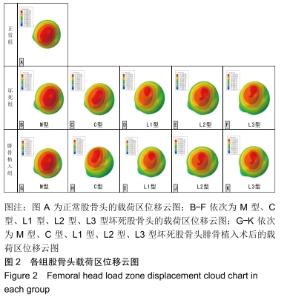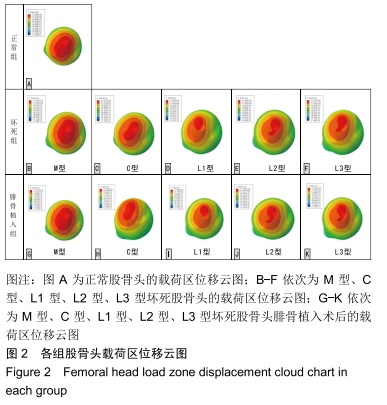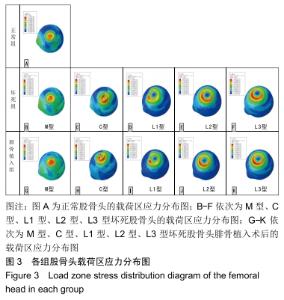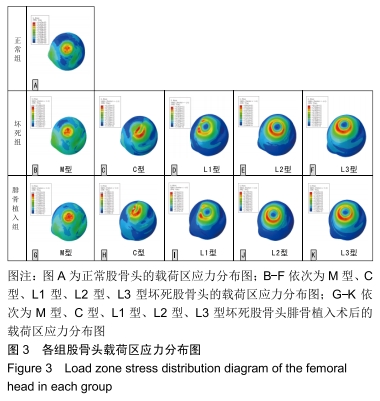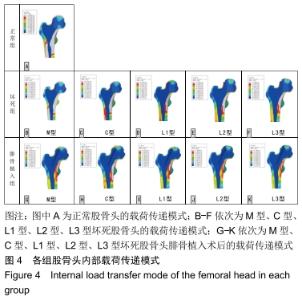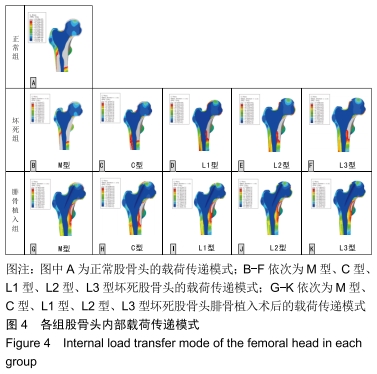[1] WEN PF, GUO WS, ZHANG QD, et al. Significance of lateral pillar in osteonecrosis of femoral head: a finite element analysis. Chin Med J. 2017;130(21): 2569-2574.
[2] 李子荣.股骨头坏死:早期诊断与个体化治疗[J].中国矫形外科杂志,2013,21(19):1909-1911.
[3] 李子荣,刘朝晖,孙伟,等. 基于三柱结构的股骨头坏死分型: 中日友好医院分型[C].全国骨关节与风湿病暨第三届武汉国际骨科高峰论坛论文汇编. 2012-09-07:13-22.
[4] 中华医学会骨科学分会关节外科学组.股骨头坏死临床诊疗规范[J].中国矫形外科杂志,2016,24(1):49-54.
[5] 周思佳,姜文学.基于CJFH分型的股骨头坏死三维分型及塌陷预测[J].中国组织工程研究,2018,22(19):3033-3038.
[6] 凌观汉,欧志学,姚兰,等.中日友好医院分型的L型股骨头坏死仿真三维模型建立[J].中国组织工程研究,2017,21(7):1074-1079.
[7] 欧志学,凌观汉,姚兰,等.三维有限元法分析钽棒置入治疗个体化股骨头坏死的力学效能[J].中国组织工程研究,2017,21(31): 4983-4988.
[8] POLIKEIT A, NOLTE LP, FERGUSON SJ, et al. The effect of cement augmentation on the load transfer in an osteoporotic functional spinal unit: finite-element analysis. Spine. 2003; 28(10): 991-996.
[9] STOLK J, VERDONSCHOT N, CRISTOFOLINI L, et al. Finite element and experimental models of cemented hip joint reconstructions can produce similar bone and cement strains in pre-clinical tests. J Biomech. 2002; 35(4):499-510.
[10] KURTZ SM, RIMNAC CM, SANTNER TJ, et al. Exponential model for the tensile true stress-strain behavior of as-irradiated and oxidatively degraded ultra high molecular weight polyethylene. J Orthop Res. 1996;14(5): 755-761.
[11] BAE JY, KWAK DS, PARK KS, et al. Finite element analysis of the multiple drilling technique for early osteonecrosis of the femoral head. Ann Biomed Eng. 2013;41(12):2528-2537.
[12] ZHOU GQ, ZHANG Y, ZENG LH, et al.Should thorough Debridement be used in Fibular Allograft with impaction bone grafting to treat Femoral Head Necrosis: a biomechanical evaluation. BMC Musculoskeletal Disorders. 2015;16:140.
[13] GRECU D, PUCALEV I, NEGRU M, et al. Numerical simulations of the 3D virtual model of the human hip joint, using finite element method. Rom J Morphol Embryol. 2010; 51(1):151-155.
[14] ANDERSON AE, ELLIS BJ, MAAS SA, et al. Validation of finite element predictions of cartilage contact pressure in the human hip joint. J Biomech Eng. 2008;130(5):051008.
[15] BROWN TD, HILD GL. Pre-collapse stress redistributions in femoral head osteonecrosis--a three-dimensional finite element analysis. J Biomech Eng. 1983;105(2):171-176.
[16] LEE MS , TAI CL, SENAN V , et al. The effect of necrotic lesion size and rotational degree on the stress reduction in transtrochanteric rotational osteotomy for femoral head osteonecrosis--a three-dimensional finite-element simulation. Clin Biomech. 2006; 21(9):969-976.
[17] VAFAEIAN B, ZONOOBI D, MABEE M, et al. Finite element analysis of mechanical behavior of human dysplastic hip joints: a systematic review. Osteoarthritis Cartilage. 2017; 25(4):438-447.
[18] ZHAO X, CHOSA E, TOTORIBE K, et al. Effect of periacetabular osteotomy for acetabular dysplasia clarified by three-dimensional finite element analysis. J Orthop Sci. 2010; 15(5): 632-640.
[19] CHEN ZP,XU Y,QI ZX,et al. The formation and function of the sclerosis rim in the femoral head: A biomechanical point of view. Med Eng Phys. 2015;37(12) :1125-1132.
[20] CILLA M, CHECA S, PREININGER B, et al. Femoral head necrosis: A finite element analysis of common and novel surgical techniques. Clin Biomech (Bristol, Avon). 2017;48: 49-56.
[21] CHEN XT, ZHU YJ, LIU YW, et al. Metal trabecular bone reconstruction systembetter improves clinical efficacy and biomechanical repair of osteonecrosis of the femoral head than free vascularized fibular graft: A case-control study. J Cell Physiol. 2019;234(11):20957-20968.
[22] 唐立明,葛辉,庞智晖,等.同种异体腓骨移植术治疗股骨头坏死的临床与计算生物力学研究[J].中华关节外科杂志(电子版), 2016, 10(2):47-53.
[23] LI B, HU RY, SUN L, et al. A CARE-compliant article: Biomechanics of treating early-stage femoral-head osteonecrosis by using a β-tricalcium phosphate bioceramic rod system: a 3-dimensional finite-element analysis. Medicine. 2018; 97(25):e10808.
[24] 厉驹,杨予,童培建.多孔钽棒植入股骨头塌陷风险与生物力学支撑效果分析[J]. 中国骨与关节损伤杂志, 2017,32(2):129-132.
[25] 何伟.如何把握股骨头坏死患者的保髋治疗时机[J]. 中国骨与关节杂志, 2016, 5(2): 82-86.
[26] GAO YS, LIU XL, SHENG JG, et al. Unilateral free vascularized fibula shared for the treatment of bilateral osteonecrosis of the femoral head. J Arthroplasty. 2013;28(3): 531-536.
[27] PAPANAGIOTOU M, MALIZOS KN, VLYCHOU M, et al. Autologous (non-vascularised) fibular grafting with recombinant bone morphogenetic protein-7 for the treatment of femoral head osteonecrosis: preliminary report. Bone Joint J. 2014; 96-B(1):31-35.
[28] 向富州,殷文靖,朱振中,等.带血管腓骨移植治疗股骨头坏死后股骨头塌陷的危险因素[J]. 中华关节外科杂志(电子版),2018, 12(5):626-630.
[29] 盛东,张庆文,陈达,等.青少年创伤后股骨头坏死的临床特点及保髋手术治疗效果分析[J].中国骨与关节损伤杂志,2018, 33(10): 1057-1059.
[30] 余光书,林焱斌,熊国胜,等.支撑应力对骨小梁分布的影响及股骨头坏死因素的研究[J].中国骨与关节损伤杂志, 2018,33(8): 820-823.
[31] ZHANG Z, YU T, XIE L,et al. Biomechanical bearing-based typing method for osteonecrosis of the femoral head: ABC typing. Exp Ther Med. 2018; 16(3):2682-2688.
|
